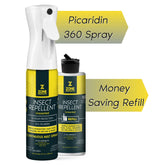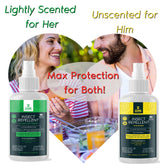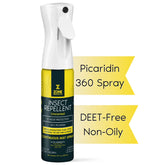Hiss Off! Slithery Facts and Protection from Snakes
For many Americans, there is nothing scarier than being surprised by a snake while casually working in the garden, grilling, or playing with the kids in the backyard. Unless you live in Alaska, chances are that snakes live close to your property. Here are some interesting facts about snakes and a few methods you can use to keep snakes off your land and out of your home.
One of the most important deterrents is Zone Hiss Off! Snake Repellent. More about that gem later.
Thanks to One Kind Planet for providing some of this slithery information.
Some Facts
Snakes are carnivores (meat eaters). I guess I’ve never seen a snake chowing down on a salad but like most others, I rarely have lunch with them.
Snakes don’t have eyelids. Herpetologists study snakes (actually reptiles and amphibians) so that has to be one of their highlights in research. Seriously, here is a neat article on a “Snake Charmer” with a cool name…Dr. Zoltan Takacs (I didn’t make that up). Another anatomy fact is that snakes have internal ears but not external ones. I guess they like to hear themselves think.
Snakes can’t bite food so they have to swallow it whole. Snakes have flexible jaws (can open 150 degrees) which allow them to eat prey bigger than their head too. I think we have all seen this bizarre occurrence.
Do they still “taste” their food? Need to ask Dr. Zoltan. Serpents smell with their tongues which is why they always stick it in and out. Can you image if people did this? I guess sticking your tongue would no longer be rude.
Snakes are found on every continent of the world except Antarctica. Snake are also not native to Hawaii but people have brought them there illegally and now they exist there with no natural predators there.
Snakes used in snake charming performances respond to movement, not sound (remember they have no external ears). Snake charmers appear to hypnotize the snakes with a swaying “pungi” (wooden instrument) but in reality they consider the person a threat and respond to it as if it were a predator. Snake charmers are certainly “Losing Their Sway”.
- There are around 3000 different species of snake and
- 600 are venomous but over 200 are considered to be medically important.
- Snake venom have proteins that have effects on various biological functions such as blood coagulation, blood pressure regulation and nerve impulse transmission.
puff them up. Really?!
- Snakes are covered in scales but their skin is smooth and dry. I am curious to know if we will see a true “snake oil” or lotion that harps on making your scaly skin smooth.
- A bonus fact is that the term “snake oil” is actually a euphemism for deceptive marketing. How will SC Johnson sell snake oil without calling it snake oil?
- Snakes also shed their skin a number of times a year in a process that usually lasts a few days. Some sea snakes can breathe partially through their skin, allowing for longer dives underwater so they better be careful when shedding.
Snakes, like other reptiles, are cold-blooded. This means that their body temperature changes in according to the temperature of their environment, unlike warm-blooded animals whose temperature remains constant. Snakes which live in colder climates will therefore hibernate in winter as it would otherwise be too cold for them to survive
Venomous snakes kill their meal (that rhymed) with their poison and then swallow. Some snakes, such as boas and anacondas, suffocate their prey by squeezing it to death (constriction) and then, yes, swallow whole.
A snake’s skin does not grow with the body the same way it does in humans. Each year, snakes will shed their skins 3-6 times to allow for further growth. This process usually lasts for a few days
Despite snakes often being feared, more people are killed by bees than snakes every year and you don’t hear people screaming about how they hate bees. Poor little snakes.
The Black Mamba is the fastest snake in the world and can move up to 12mph (20kmph)! This one freaked me out a bit. I’m not sure if I can outrun this thing.
Two-headed snakes are not just mythical creatures – they can occur on rare occasions! Often the two heads will fight each other for food despite sharing the same body. That’s just a neat fact and I’d love to see that.
Okay, now you either like snakes more or less and fear them more or less or just don’t really care either way…just tell us how to prevent, protect and keep them away from me Brian!
Some Prevention Measures
Mow grass often and keep it short. Snakes are less likely to hang out and move through short grass because it increases their exposure to predators (e.g., coyotes, hawks). Short grass also makes snakes easier to spot by you and your family members.
Avoid watering your lawn. Watering of your lawn and garden may attract prey species (e.g., worms, slugs, frogs) which may attract snakes seeking a meal.
Keep trees and shrubs trimmed. Trim trees and shrubs away from your home and garage, and keep branches away from the ground. Creating a 24-36" space under trees and shrubs will reduce snake use and will make snakes easier to spot if present.
Move the bird feeder. Birds are messy eaters and often leave seed scattered below their feeder. Seed on the ground attracts rodents which may attract snakes seeking a meal. Move feeders away from the house or stop feeding altogether. Store bird seed in a metal can with a tight fitting lid.
Install a perch pole. Hawks and owls are natural snake predators that can be attracted to an area with the aid of a well placed perch pole. Poles should be placed in open areas so the hawk or owl has a good view of the yard and surrounding area. Learn more.
Feed pets inside. Feeding pets outside can attract insects and rodents which attracts snakes. If feeding outside is necessary, be sure to cleanup uneaten food right away. Store pet food in a metal can with a tight fitting lid.
Move your woodpile. Store firewood, excess lumber, and other types of debris away from your home. Stacks of lumber and firewood, and other piles a debris are prefect places for snakes to hide.
Think before you landscape. Avoid using mulch and large rock in your landscaping. These materials attract snakes and their prey, and can create breeding and overwintering habitat. Instead, use smaller tight-fitting rock such as gravel or river rock. Avoid water gardens and Koi ponds as these water features attract snakes.
Do not use mothballs. The active ingredient in mothballs is naphthalene or paradichlorobenzene. These chemicals are
- toxic to insects and mammals, but are not effective against
- snakes (San Julian, 1985). Naphthalene may cause illness in
- humans, and have been linked to death in children. Using
- mothballs outside your home violates product labels, and
- puts your family and pets at risk. Do not use mothballs.
- Here's a short video showing mothballs are ineffective against snakes.
Do not use sulfur. Many snake-away products claim that sulfur in their products will keep snakes away. Unfortunately sulfur is not effective at deterring snakes and is a waste of money (San Julian, 1985)..
Do not relocate problem snakes. Snake relocation might seem like a good way to reduce human-wildlife conflict, but most research on the topic has found that the snakes die more often than not when relocated.
Last but not least...
Use Zone's Hiss-Off line of snake repellents. Hiss Off comes in a ready-to-use 32oz spray bottle and if you need to build a larger perimeter, get Hiss Off! Snake Repellent concentrate to treat up to 4000 sq.ft.
Gosh Brian, how does it work? Zone Hiss Off Snake & Reptile Repellent uses a blend of natural oils that are encapsulated with Rain Guard Technology (RGT). These oils present a smell that is offensive to snakes but pleasant to us. And, with RGT, time between applications is 1-2 months.
All of our Zone Protects animal repellents are safe, inexpensive, and extremely effective. If you need guaranteed results, look no further. We'll keep snakes at bay so your family, pets, and home are safe.
References:
Smith, Christopher, “Keeping Snakes Away: Advice from a Wildlife Biologist”, June 19, 2017.













